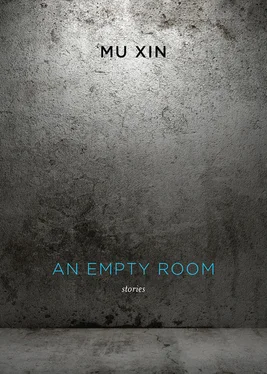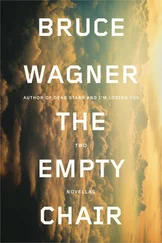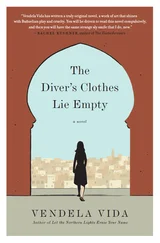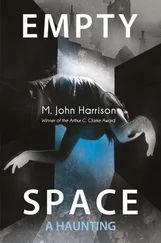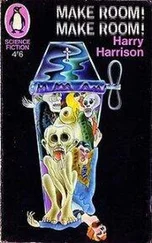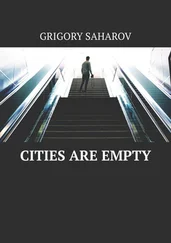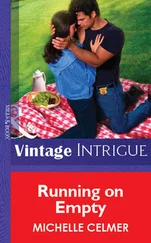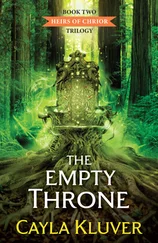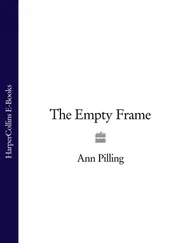Mu Xin - An Empty Room
Здесь есть возможность читать онлайн «Mu Xin - An Empty Room» весь текст электронной книги совершенно бесплатно (целиком полную версию без сокращений). В некоторых случаях можно слушать аудио, скачать через торрент в формате fb2 и присутствует краткое содержание. Год выпуска: 2011, Издательство: New Directions, Жанр: Современная проза, на английском языке. Описание произведения, (предисловие) а так же отзывы посетителей доступны на портале библиотеки ЛибКат.
- Название:An Empty Room
- Автор:
- Издательство:New Directions
- Жанр:
- Год:2011
- ISBN:нет данных
- Рейтинг книги:3 / 5. Голосов: 1
-
Избранное:Добавить в избранное
- Отзывы:
-
Ваша оценка:
- 60
- 1
- 2
- 3
- 4
- 5
An Empty Room: краткое содержание, описание и аннотация
Предлагаем к чтению аннотацию, описание, краткое содержание или предисловие (зависит от того, что написал сам автор книги «An Empty Room»). Если вы не нашли необходимую информацию о книге — напишите в комментариях, мы постараемся отыскать её.
In Our Time
An Empty Room
An Empty Room — читать онлайн бесплатно полную книгу (весь текст) целиком
Ниже представлен текст книги, разбитый по страницам. Система сохранения места последней прочитанной страницы, позволяет с удобством читать онлайн бесплатно книгу «An Empty Room», без необходимости каждый раз заново искать на чём Вы остановились. Поставьте закладку, и сможете в любой момент перейти на страницу, на которой закончили чтение.
Интервал:
Закладка:
Once again my eyes scan the grass, half hoping to find the missing plate somewhere near the platform.
On the platform is a penny. A coin may be dropped accidentally on the footpath or in the grass, but how could it end up on the platform so high above the ground?
I pick up the coin, and for some reason when I place it back down I feel a sense of emptiness and bewilderment. I end my walk disappointed — an incomprehensible occurrence is frustrating.
(I include these thoughts in my diary to show that there is nothing to be recorded.)
Edward VIII and Wallis Simpson, famous lovers of the twentieth century, have now become part of the past. Newspapers around the world mourned her death as if they were holding a retrospective exhibition for an artist. Photos of the younger Wallis glamorized the newspapers for several days.
Because the exhibition looks retrospectively at the love between the Duke and the Duchess of Windsor, worldly men and women seize the occasion to recall their own experiences of falling in and out of love.
This has clearly been a most vulgar century — both brutal and overly sentimental. No wonder when people today suddenly find themselves remembering the Duke and Duchess of Windsor, what seems to be a mildly classical fragrance greatly confuses them, so much so that they feel, all too sadly, that time is being pulled backward. Some wonder aloud: Is love real and really possible?
Who knows in what era someone first thought, Life is like a dream. Before then, who had heard such a figure of speech? Life is like a dream: those who heard it must have felt the lightning bolt of a revelation, and spread the sentiment widely until everyone was saying it. From this we can deduce another story of remote antiquity. Someone — a man or woman, we cannot know — was the first ever to say to the person closest to his or her heart, “I love you.” Following the same logic, there must have been someone who first created the word “love” and placed an “I” before it and a “you” after it. Those who heard the sound of “I love you” and who saw those words for the first time must have felt the most intense ecstasy, for who could’ve thought that heartfelt passions could be translated into the sounds of words? Afterward, for generations of men and women born into this world, the word “love” became so overused in speeches and writing that it became stale, awkward, and clumsy. This is why when the lovers of Windsor announced their love with such clear voices and wrote about it in such a neat hand, others once again felt that life is life and dream is dream, and once again thought: life is like a dream. In fact, at that moment, these people exist in life and not in dream.
At Cartier’s in Paris, at different times Edward VIII purchased for Wallis a whole range of jewelry, totaling eighty-seven items.
From Van Cleef and Arpels, he purchased twenty-three items, including a necklace of rubies set around diamonds, bearing this inscription: My Wallis. David.
A sapphire watch encased in diamonds, also purchased from Van Cleef and Arpels, is inscribed: For our engagement: 18V-37.
From Cartier’s, a ruby bracelet with diamonds for their first wedding anniversary, June 3rd.
An evening handbag decorated with pearls and diamonds.
Belts and mirrors encased in precious stones.
Leopard-shaped and tiger-shaped bracelets and hair clips set with Cartier’s famous cat’s-eye cabochons.
A red crane pin decorated with rubies, sapphires, jade, and diamonds.
A total of two hundred and sixteen items. As if words were not enough, the Duke of Windsor used jewelry to enhance his expression of love to Wallis, the woman for whom he abdicated his English throne. She was, perhaps, innocent, or at least despondent, her whole life; the royal family and upper class society secretly watched her as if she were a bad omen. It’s said that before her death, for eight years she had secluded herself upstairs in her home at Boulogne, France, and for seven years had been unable to speak. Those two hundred and sixteen objects of love’s promises have since been deposited in a bank; they could remain frozen there forever, no longer shimmering with the crystal in the candlelight.
The deepening of autumn doesn’t mean bleakness in the cemetery. Trees are denuded of leaves and their fine twigs reflect the azure of the sky. Their splendor delights the eye in the season of their nakedness. Summer is the season of naked humans, as winter is the season of naked trees.
My speculation that the cemetery is deserted has been proven wrong. It’s no longer my own solitary enclave. The coin placed on the platform of the fifth tombstone has been flipped over. I remember when I first picked it up and put it down, Lincoln’s portrait faced up. Now it shows his Memorial.
Someone else has seen this penny, picked it up, and replaced it.
I flip the coin back to the side of Lincoln’s portrait.
Several days later I return to the cemetery to find the Memorial facing dim twilight.
A message. Between the portrait, which is my side, and the Memorial, which is the Other’s, there is a message. The heads and tails of the message are linked. Other than that, there is neither beauty nor ugliness, wisdom nor folly, strength nor weakness. Anyone can pick up the coin between the thumb and index finger and turn it over.
No wind, or rain, or snow can make the flat coin flip; birds will not peck it; squirrels only follow their sense of smell to look for food — whatever turns the coin from heads to tails is a human force.
I, the head; the Other, the tail; after turning the coin several times, the message deepens:
I exist.
I do not forget.
I am willing to continue.
As the heads-to-tails turning increases, the message acquires a new value:
I am the reason that the Other still exists.
How can I forget.
I can no longer discontinue this continuity.
At first, this is but a simple hand gesture using two fingers — the initial message is as natural as heads or tails — but as I and the Other, each representing a side, keep turning the coin, we create with our own hands a fated cycle that we fall into.
If I no longer visit the cemetery, or if I visit the cemetery without going near the fifth tombstone, or if I walk past the tombstone without turning over the coin — each of these three possibilities is immoral, almost sinful.
Execution grounds, casinos, battlegrounds are all places where brutality is exercised. Sotheby’s is also such a place. April 1987: Sotheby’s in Geneva plans to sell the two hundred and sixteen promises of love the Duke of Windsor gave to the Duchess.
The Duchess has donated the majority of her property to the Pasteur Center, a medical research institution that cannot think of a more caring and appropriate way to handle these gifts of love than to submit them to Sotheby’s who have them locked in a Geneva bank.
The voice of Sotheby’s says: We have invited jewelry experts in Geneva to appraise this collection; it is only reasonable that we hold the auction for these items.
Does love need appraisal? When the jewelry experts appraise the love between the Duke and the Duchess, what should be priceless will be given a price.
April: a warm season suitable for growth. Switzerland: a fortunate country. Geneva: a city of clear lakes. Sotheby’s: a place for exercising brutality.
The necklace of rubies and diamonds is insured by the bank for 600,000 pounds sterling. Experts, however, estimate its actual value at 500,000 pounds. An American film actress is the first to make an offer; a member of the Dubai royal family counters with a price of 550,000 pounds; a German steel tycoon bids 600,000 pounds, an amount that equals the insurance cost; the king of Greek shipping adds 20,000 to this amount. Then comes Mrs. X, widow of the platinum king, who had a close relationship with the Duchess of Windsor. She once saw Wallis wearing the ruby necklace at an evening party and was deeply impressed.
Читать дальшеИнтервал:
Закладка:
Похожие книги на «An Empty Room»
Представляем Вашему вниманию похожие книги на «An Empty Room» списком для выбора. Мы отобрали схожую по названию и смыслу литературу в надежде предоставить читателям больше вариантов отыскать новые, интересные, ещё непрочитанные произведения.
Обсуждение, отзывы о книге «An Empty Room» и просто собственные мнения читателей. Оставьте ваши комментарии, напишите, что Вы думаете о произведении, его смысле или главных героях. Укажите что конкретно понравилось, а что нет, и почему Вы так считаете.
